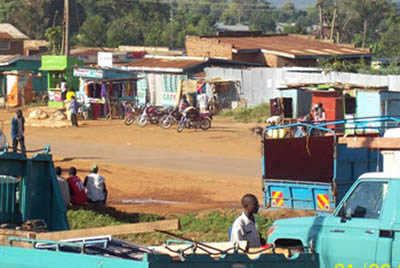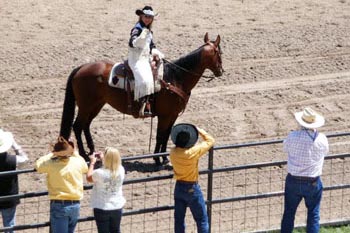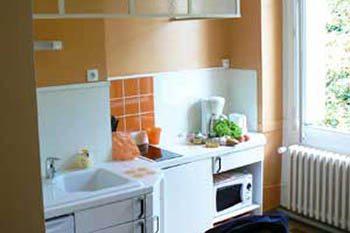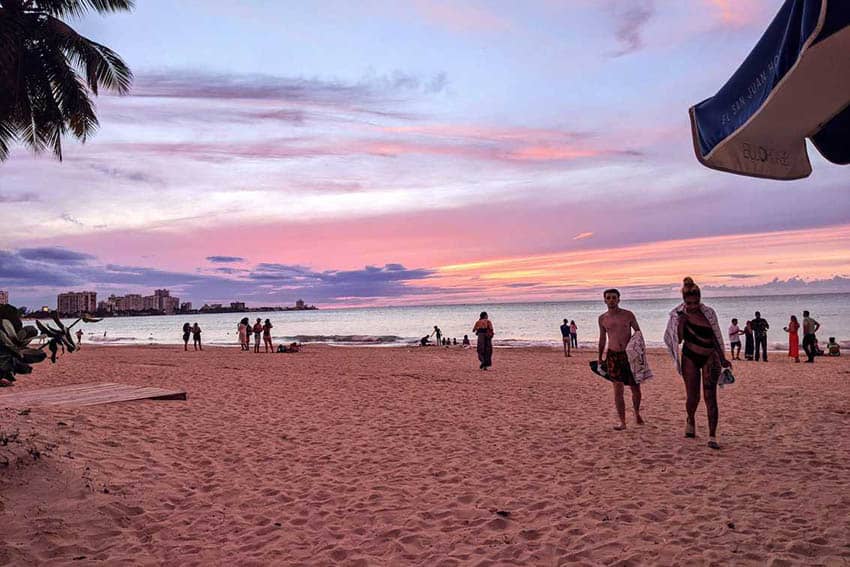
Living Boricua in San Juan, Puerto Rico
By Dana Armstrong
San Juan: Where the People Make the Place

Right off the bat, I could tell there was something different about San Juan, Puerto Rico.
There was a vibrancy in the air emanating from the mishmash of cultures and the surprisingly friendly and frequent interactions between locals and tourists.
Maybe it’s because my trips tend to be in Europe where being a tourist automatically puts you in ill favor of the locals.
I was used to being given the cold shoulder while abroad. That was not the case in San Juan.
There’s a term Puerto Ricans use to describe the people who are born there: boricua or boriqua.
It is derived from Boriken – what the indigenous Taíno people first named the island before Spanish settlement.
Beyond its literal definition, the term conveys the national pride, enthusiasm, and love Puerto Ricans have for their homeland and culture.
It’s a love they seek to share with any curious travelers who come to stay on their island, and I was to soon discover it myself.
Starting Point: Fairmont El San Juan
On a balmy June afternoon in San Juan, just hours after my arrival on the island, I decided to take an aimless stroll down a street to see what I’d find. My starting point was the ritzy Fairmont El San Juan hotel where I stayed for the length of my trip.
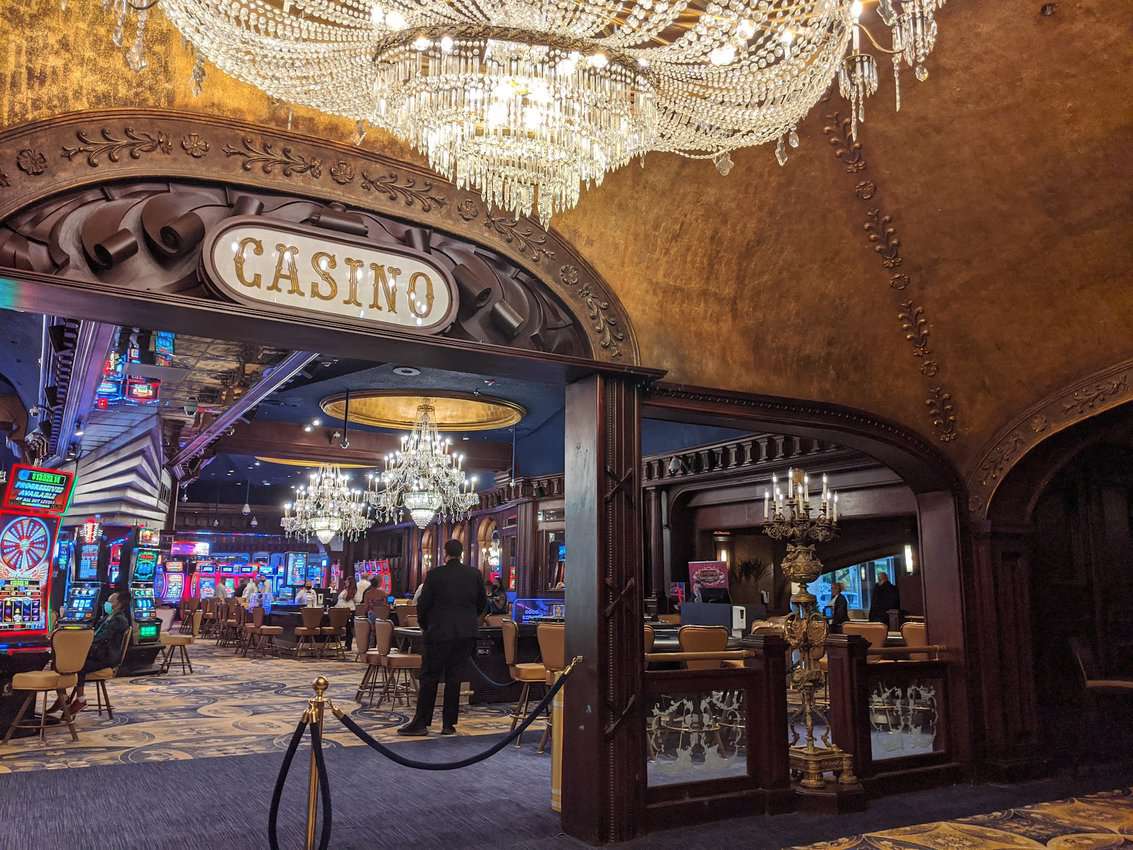
The hotel lobby’s marble floors and carved mahogany wood ceiling tiles exhibited timeless 1950s glamour.
It was no surprise to hear that many of the 60’s stars like Frank Sinatra, Nat King Cole, Liza Minnelli, and Rita Moreno all performed there.
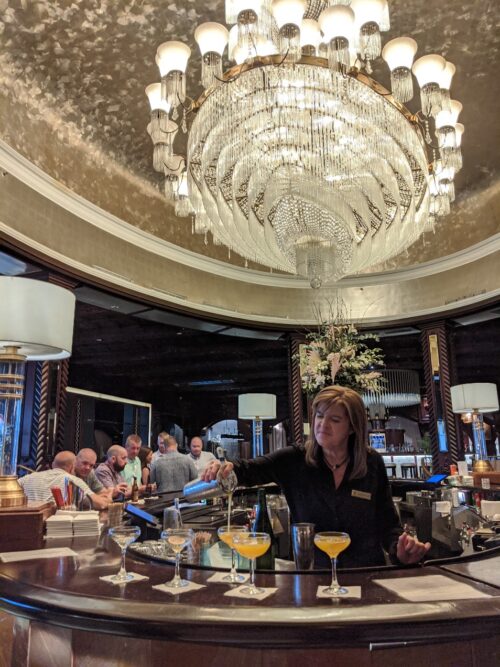
I passed by the lobby’s recessed ovular bar and the impressive 7,000 crystal chandelier that loomed over it.
The ongoing joke of my stay became: how many chandeliers can you fit in one hotel? They were scattered throughout the Grand Ballroom, restaurants, casino, and even outdoors in the limbs of a 300+-year-old Banyan tree.
Just outside the hotel’s front doors were three young women in bright, animal print dresses and high heels, clearly ready for the Noche de San Juan party set to take place at the hotel that night.
As I walked past, the lady in neon green smiled at me and asked, “Is it nice?” in reference to the hotel.
“I’ve only just arrived, but it’s gorgeous,” I said, and I saw her eyes light up with the promise of a good night of partying ahead.
Strolling Isla Verde Avenue
On Isla Verde Avenue, I passed street art, an ocean-front walled cemetery, and commercial stretches of convenience stores and restaurants.
There were gas prices at gas stations that seemed surprisingly low – until I learned it was measured in liters.
Swimwear-clad people carried beach chairs to their cars, and a teenage boy took his little scruffy dog on an afternoon walk.
The only respite from the mid-day heat was the cool breeze rushing through gaps between the ocean-front hotels and apartment buildings.
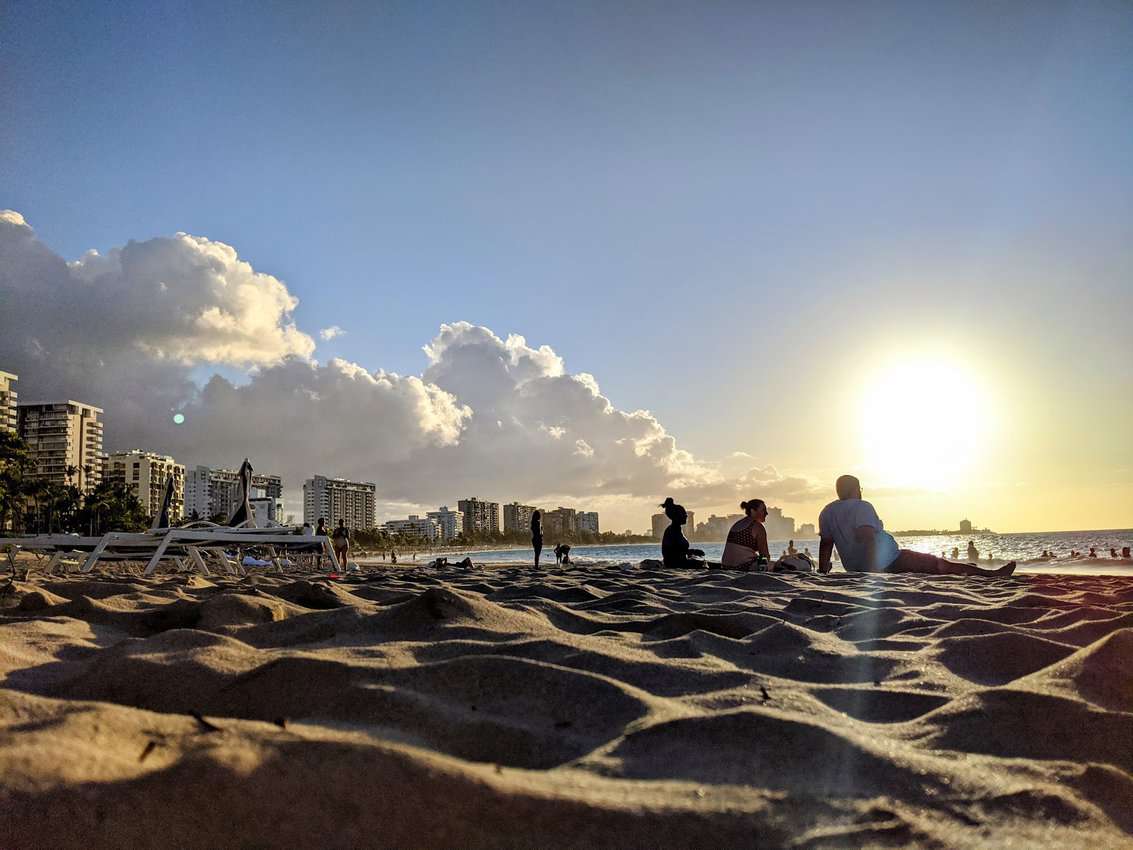
Approaching the gate of one apartment building, I saw an elderly woman with a walker parked out front. Upon seeing me, she waved me down and asked if I could help her get the attention of the door attendant to let her in.
It took maybe five seconds for me to climb up the stairs to get the attendant’s attention. Nonetheless, for my assistance the woman thanked me with the warmest smile and an enthusiastic, “¡Gracias, mija!”
The biggest takeaway from my stroll was not the physical surroundings, but the warmth and welcoming energy of the local people. It was a little thing, but one that made me feel instantly at ease and excited for the rest of my trip.
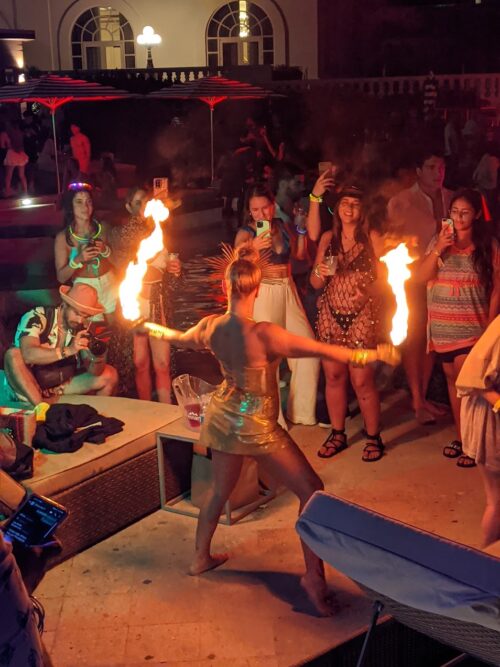
La Noche de San Juan in San Juan
The fun started on night one with the Fairmont El San Juan’s La Noche de San Juan outdoor pool party.
The holiday itself celebrates the eve of the birthday of Saint John the Baptist and takes place every June 23, right around the time of the summer solstice.
But don’t be fooled by the holiday’s biblical origins. For many countries around the world, including Puerto Rico, it makes for a perfect excuse to party on a weeknight.
Every country practices its own variation of the festivities. In many countries, this includes pagan-like bonfires.
At the Fairmont El San Juan, the only fire present was at the end of a golden-clad fire dancer’s batons.
Fire Dancers and Models
Party-goers weaved around the fire dancers, and models showed off fashion designer Rebeca Tiago’s latest swimwear collection.
They caught up with friends over rum-based cocktails, took dips in the pool, and danced to DJ Caleb Calloway’s mixes of popular Puerto Rican rapper Bad Bunny.
To be frank, it was a blur of 20-somethings in swimsuits having a good time.
But as a 20-something myself who had been sheltered in the pandemic state of mind for literal years, it was incredibly refreshing to see society returning to some semblance of normal.
Near midnight, I moved towards the beach to join in on Puerto Rico’s primary La Noche de San Juan tradition.
The beaches were lined with locals and tourists for as far as I could see. Right at the stroke of midnight, we all plunged backward – at least three times, though some opted for more – into the ocean to wash away all the bad luck and negativity from our lives.
Bounced Back & Ready for Action
Like any Caribbean Island, much of Puerto Rico’s revenue comes from its tourism. In September 2017, the devastating Category 4 Hurricane Maria destroyed countless homes and buildings across the island and left San Juan without electricity and water for months.
Then, just as hotels and businesses were restoring and seeing hope for normalcy, the pandemic struck and shut off tourism again.
By July 2021, Puerto Rico officially reopened to tourists. For many Americans itching to travel again, this American territory became the farthest (and arguably most fun) place to explore without a passport.
According to a representative from Discover Puerto Rico, the island is experiencing more tourism now than it did in 2019. With so many new and rebuilt businesses, now is the perfect time to visit San Juan.
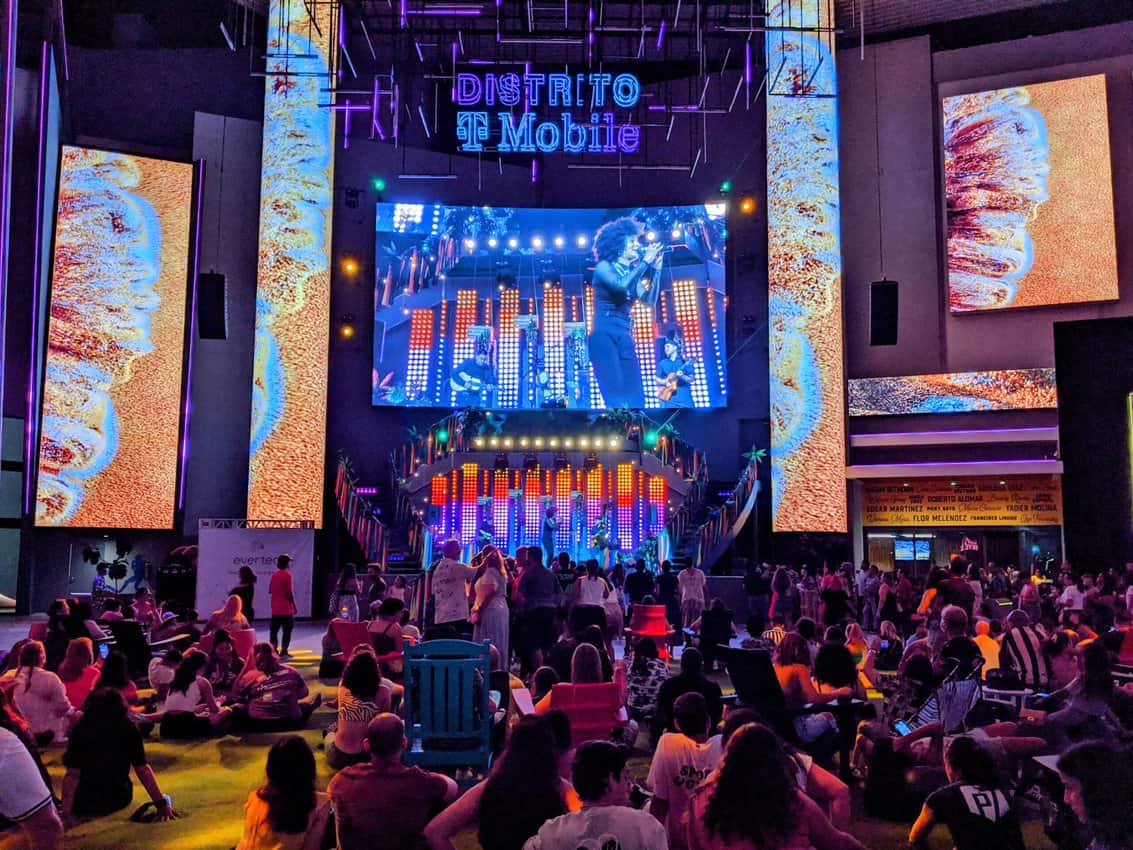
Nightlife at Distrito T-Mobile
Nowhere is this redemption more physically apparent than at Distrito T-Mobile. The construction of this Las Vegas-reminiscent entertainment venue began in early 2017. But setbacks due to Hurricane Maria and the pandemic delayed its grand opening until August 2021.
I had the pleasure of experiencing the venue during its All Out Fest, a 5K race and concert for Pride Month.
After an incredible grilled dinner at Chef Mario Pagan’s La Central, I was dazzled by the massive LED screens, rainbow décor, and bumping music of the concert in the center of the venue. We even saw zip-liners whiz by above our heads.
For as tourist-oriented as I thought the venue would be, I was pleasantly surprised to see so many locals enjoying the space.
Tonight, the island’s LGBTQ+ population was out and proud. One highlight of the concert was the performer singing “The Chicken Dance” with increasing speed and seeing couples crying with laughter as they struggled to keep up with the dance.
In another part of Distrito T-Mobile, the Arena Medalla sports bar, it was easy to tell this was the place to be for gathering with friends and watching a game on the big screen. On the upper level were groups of people playing beer pong, singing karaoke, and playing vintage arcade games.

Salsa Lessons at El Bastion
It’s no secret that many Puerto Ricans love to party and dance. So, to have a good time at a concert, bar, or club, it’s best to know some dance basics.
The Afro-Puerto Rican dance style bomba and the Latin ballroom salsa are the most popular styles in Puerto Rico. Bars such as Piso Viejo and La Verguenza in San Juan host weekly classes that teach you the basics of salsa and bomba.
But for my trip, I was fortunate to learn some salsa with David Colón Nieves and his sister in the El Bastion community center. In just an hour, I had the basic steps and the sequence for right and left turns down.
“Now that you have the basics of salsa, you can go into any bar tonight and dance the night away,” David said at the end of our session.
Our efforts even earned us the applause of David’s next class of more advanced salsa students.
Community Focus
El Bastion’s Artistic Director, Maite Rivera Carbonell, explained that the center is part of the non-profit ACirc Association. The center hosts art workshops and exhibitions, concerts, and a variety of dance and circus classes for locals and tourists to enjoy.
We also explored the community garden El Bastion shares with the adjacent Casa Blanca Museum (once the home of Juan Ponce de Leon).
The garden developed shortly after Hurricane Maria as a way to help the residents of Old San Juan.
Any community volunteers that help with the garden can harvest fresh produce like pineapples, guava, and plantains from it. The center’s water cistern and solar panels also help provide for the community in future emergencies.
Even if you’re not working or harvesting the garden, it’s worth exploring there to see the fortified wall of Old San Juan and the stunning ocean views. Admission to the garden is included with a tour of Casa Blanca – a fact Carbonell said not enough people realize.
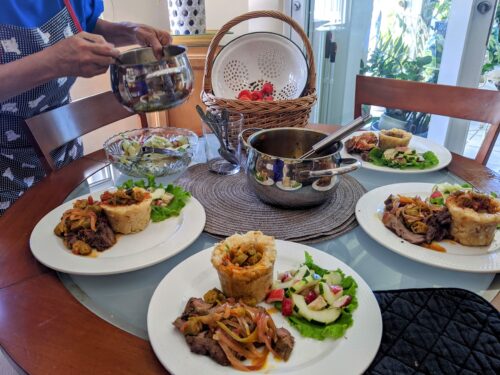
Cooking with Nivia
I got another taste of San Juan’s community spirit at the farmer’s market in Old San Juan, which takes place from 8 am to 12 pm every Saturday near the famous El Morro fortress.
There were around fifteen tents with farmers and vendors selling their homegrown and homemade goods.
Fresh yucca and pomarosa, potted orchids, handmade soaps, freshly squeezed juices, and made-to-order coffee pour-overs were all available.
I had Chef Nivia Villanueva guide me through the market. She struck up conversations with the farmers she knew and gave me tips for picking out the best produce. After gathering a basket of ingredients, we headed to her home to cook it all up.
Nivia is a private chef and volunteer for World Central Kitchen. She also hosts cooking classes in her home which she advertises through Airbnb.
The Fight for Food Security
For our class, Nivia served us her “Rum Fun Punch” and walked us through cooking a menu of Pastelillo de Carne (the Puerto Rican version of empanadas), mofongo de yuca with a skirt steak and okra stew, and cucumber pomarosa salad.
All the while, she shared stories of her mother and grandmother, who also grew up in Puerto Rico. Her cooking assistant for the day was one of her childhood friends.
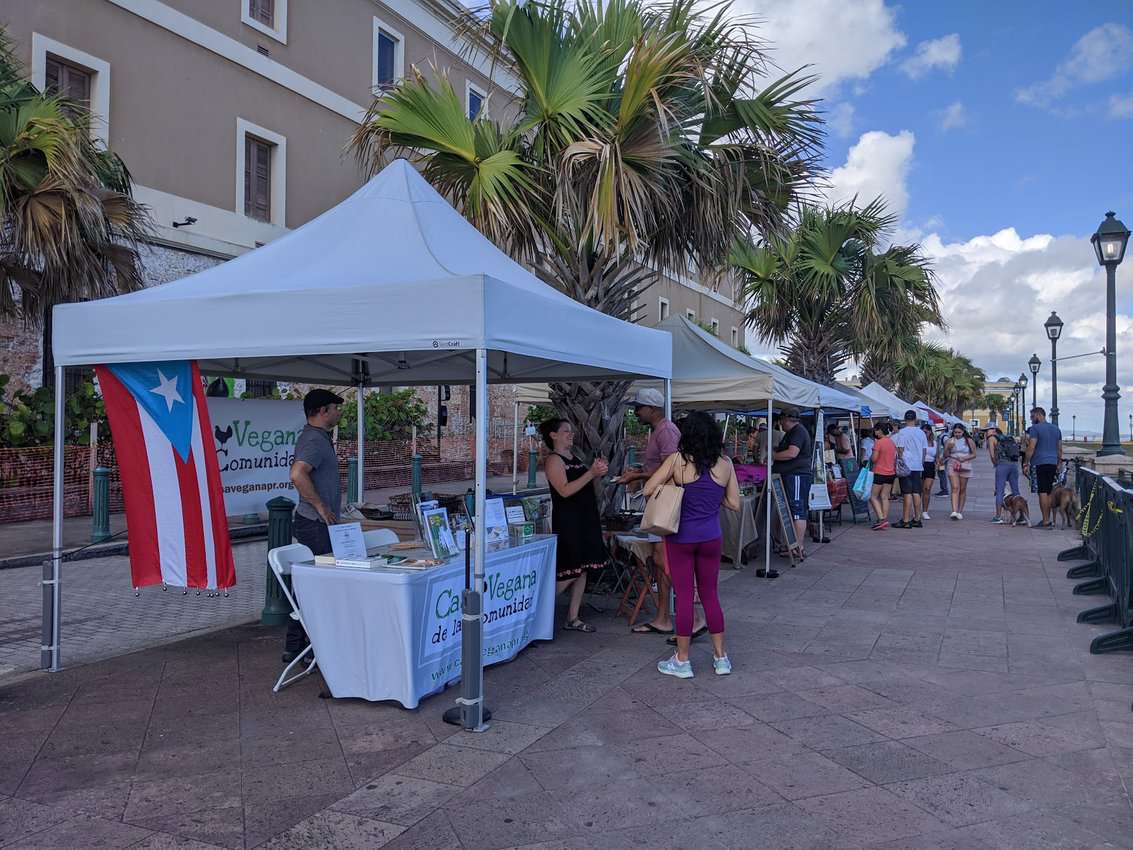
She said both the hurricane and the pandemic served as a wake-up call for the island in terms of the need for food security. Since shipping became difficult in the wake of these events, farmers became the saviors of the island.
Therefore, Nivia’s mission with her cooking classes is multi-faceted: to promote sustainable agriculture, support local farmers, pass on essential cooking skills, and share her deep love for her culture and heritage.
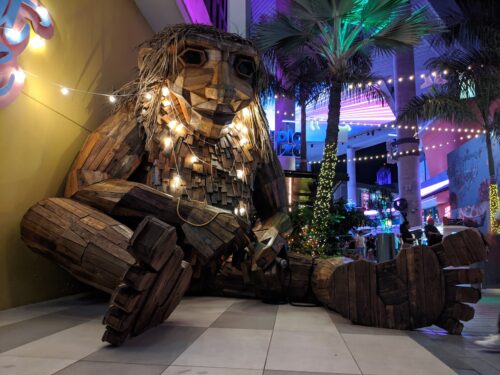
“I want you to be the expert in your city!”
With every experience I had in Puerto Rico, I found there was a Puerto Rican local enthusiastically welcoming me into their culture.
I joined local guide and founder of the Puerto Rico Historic Buildings Drawings Society, Andy Rivera, for an architecture tour. His enthusiasm for Puerto Rican history was palpable.
Rivera repeatedly emphasized that, as we were Americans and therefore this was our city, we needed to know the correct history of Puerto Rico. It was a history that he, as a Puerto Rican, even had to relearn.
Rivera pointed to the worn, blue cobblestones beneath our feet. “In school, they told me the blue cobblestones came from Spain. That’s a lie. They came from Liverpool, England.”
He walked us through the multicultural architecture of Old San Juan’s buildings where Spanish balconies neighbored Dutch doors and French windows.
A Spontaneous Home Visit

One man who greeted Andy on the street even spontaneously showed us inside the home he was renovating.
The construction workers inside laid down a slab of wood for us to walk over so we could see a closer view of the mosaic work on some internal stairs.
Back wandering the streets, Rivera noted that the buildings were not always colorful – the Puerto Rican government started painting over the originally white buildings in 1952 to attract tourists.
To this day, they regulate the painting of the buildings so no two of the same colors will repeat on the same street.
We winded down streets specially designed to funnel air and create cool refuges for the hot San Juan days. But even with those brilliantly designed streets, I still got overheated on our tour.
Note to readers: Don’t forget to drink lots of water, wear cool clothes, and reapply your sunscreen because the sun can get brutal!
Rivera also explained that some of the best restaurants in Old San Juan are off the beaten path like El Jibarito on Calle Sol.
Though these restaurants may not look the fanciest on the outside, the authentic Puerto Rican food made and served by Puerto Ricans is well worth it. Plus, restaurants like these are often a lot cheaper than the other tourist-laden restaurants near Calle Fortaleza.

Local Art on Calle Fortaleza
But that doesn’t mean you should skip Calle Fortaleza entirely. I loved seeing the abundance of art stores on this street. It’s an easy way to find a meaningful souvenir that will directly support local artists.
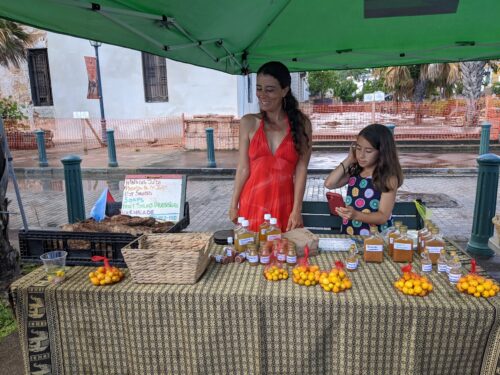
In the Handcraft Store, worker Jeff Holsman said their store had 41 artists on display at the time of my visit.
The array of traditional art like handmade ceramics and painted magnets was accented with items like paintings on plantain leaves and glow-in-the-dark fish made out of coconut tree scraps.
“That’s what amazes me about artists,” Holsman said. “They see an everyday item and say ‘I could do something with that.’”
Puerto Rico: A Place You Need to Experience
Puerto Rico has a culture that is meant to be experienced rather than read about or passively viewed. You’ll learn more about it through its food, art, and people than you ever could through a screen.
For those reasons, I was so glad to visit Puerto Rico and live Boricua for a few days.
This trip was sponsored by Discover Puerto Rico, but all opinions are the author’s own.
- Tennessee’s Smokies: Daring Drives and Overlooks - January 8, 2023
- Anakeesta Sparkles 6 Years After Gatlinburg Fires - December 29, 2022
- San Juan’s Warmth and Vibrant Night Life - July 26, 2022


